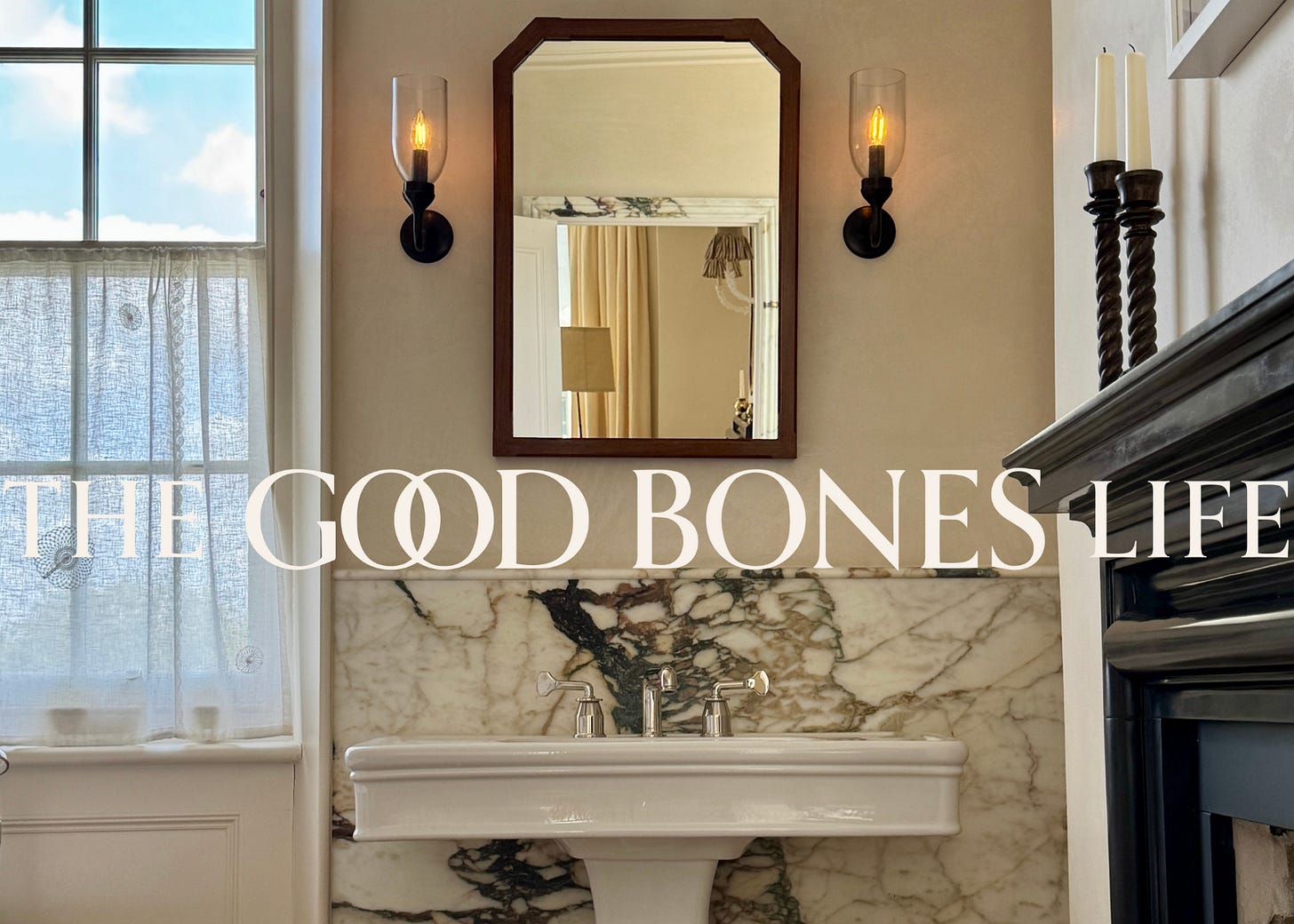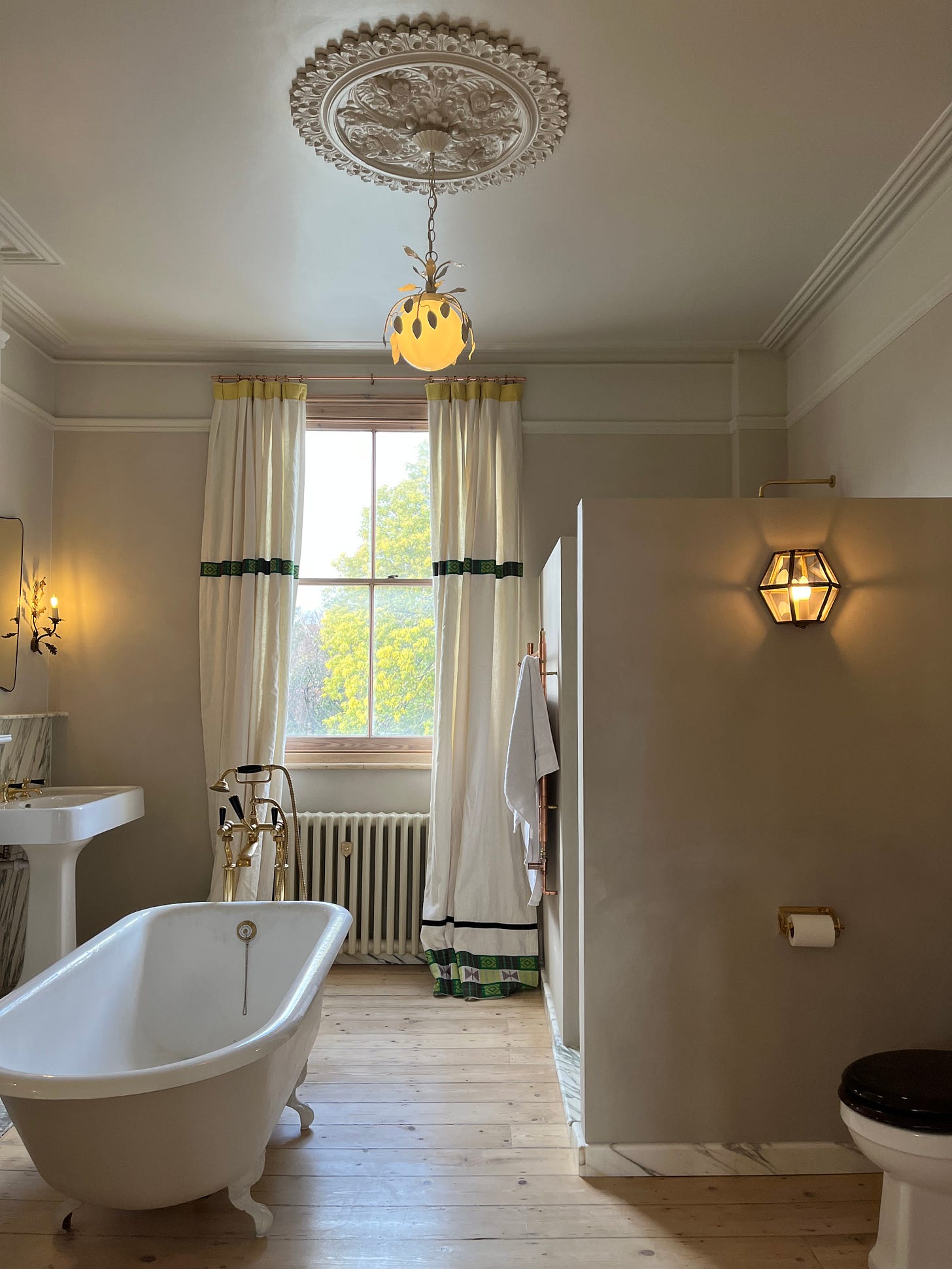Bathroom Lighting: the Design
the "rules", metals, floor plans, the works: a must-read before you tackle a bathroom renovation
As in every room, lighting can completely transform the look and feel of your bathroom and is important to consider from the very beginning of a project.
Actually, scratch that.
I’d argue lighting is even more important in a bathroom because, in almost every circumstance, it’s fully built-in and can’t be easily altered. There are no lamps! Sometimes tiles or stone would be compromised by moving or even changing a fixture. Plus, many bathrooms have little or no natural light so we use the lights more than in other rooms. Plus, it’s a room where seeing oneself in the mirror can be kind of a big deal.
But bathroom lighting can be a pain. Far too often, lighting a bathroom is harsh or inadequate. IP ratings (or the US equivalent, NEMA) tend to scare people off and unnecessarily narrow options. Lighting is so often an afterthought and a missed opportunity to imbue a room that can so easily tend towards the soulless and clinical with a bit of personality and charm.
But do not fear! Lighting a bathroom may be something that begs your thoughtful consideration, but it’s not impossible or overly complicated. Here’s how I design bathroom lighting (with IP ratings, functionality and beauty in mind), plus the fixtures I love and why.
Design for the Space
This may seem obvious and is a great rule of thumb when designing the lighting in any room but it’s especially relevant in a bathroom (and kitchen) where very specific things need to happen. This means you need task and ambient light that makes sense for the room and what’s going in it.
This entire article is, it should be noted, mostly relevant for actual bathrooms, not little loos or powder rooms, where you can often turn to lighting that’s mostly decorative.
Bathrooms are often smaller rooms with lots of restrictions—certain things need to live in certain parts of the space. The space you’re actually working with, rather than the one you wish you had, should drive your lighting decisions. This may mean that lights will go in places you’d never really considered before—above doorways and inside shower nooks, for example.
Let’s Talk About Water Ingress
I don’t usually use IP rated lights in the bathrooms I design. Don’t get me wrong. IP Ratings (or NEMA ratings in the US) are important. For sure. I think about IP ratings when choosing where the lights will go and what they’ll be. But I think about this graphic even more:

As the above illustration shows, you do not need to use IP-rated light fixtures in every part of your bathroom. In fact, you only need to use them in very specific areas. Areas that, I would argue, you’re not often putting lights.
For context, I just measured the distance between the sink taps and the wall lights in my bathroom and it’s 95 cm; in our girls’ bathroom it’s 120 cm— well outside the 60 cm radius of Zone 2. This means that when it comes to choosing your all-important sink lights, you are not restricted to IP-rated fixtures. The world is your oyster!
Start with the Sink
Some will have a bidet, some a bathtub, some a separate shower room, some a separate toilet space, but one thing every single bathroom will have? Is a sink. (Or two!)
Keep reading with a 7-day free trial
Subscribe to The Good Bones Life to keep reading this post and get 7 days of free access to the full post archives.






